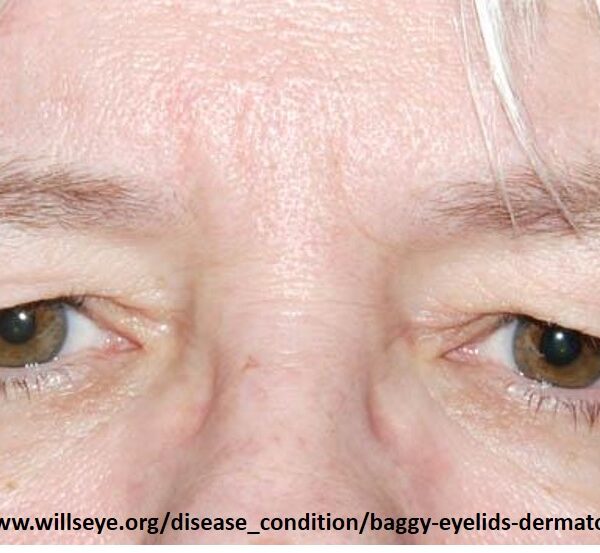
Droopy Eyelids?
September 18, 2020

Do you look in the mirror and see tired, heavy eyelids? Do you have trouble achieving the “bright-eyed and bushy-tailed” appearance even when you are wide awake? If you answered yes, to either of these questions – you might have “droopy” eyelids.

Ptosis (silent ‘p’ = TOE-SIS) and dermatochalasis are the medical terms for saggy or droopy eyelids. Either type can affect one or both eyes. The amount of upper eyelid involvement can be mild or severe to the point of covering part of the vision. If the eyelid obscures any portion of the pupil, the upper part of normal peripheral vision can be blocked, followed by changes to central vision.
Causes of Ptosis
– Aging
– Trauma or injury to the eyelid
– Eyelid swelling associated with a stye
– Tumor behind the eyeball
– Other systemic conditions: Horner syndrome, myasthenia gravis, diabetes
Types of Ptosis
Involutional Ptosis
Most commonly seen in elderly people, involutional ptosis occurs when the levator muscle of the eyelid stretches with age. The levator is responsible for lifting, or elevating, the upper eyelid into position when the eyes are open. Other non-age-related reasons for increased stretching of the levator muscle include previous eye surgeries and prolonged wearing of rigid gas permeable (RGP) contact lenses.
Myogenic Ptosis
Myogenic ptosis is directly related to a weakened levator muscle. This can be caused from myasthenia gravis or any type of muscular dystrophy that can affect ocular muscles. A hallmark symptom of myasthenia gravis is fluctuating weakness and fatigue of voluntary muscles, such as those of the eyelids.
Neurogenic Ptosis
Neurogenic ptosis occurs when there is damage or poor function of the nerves in the eyelid that connect to the levator muscle. The oculomotor nerve (AKA third cranial nerve) is the major nerve that is responsible for keeping the eyelid open. If a tumor or aneurysm presses against the nerve during its path from the brain to the eyelid, it may cause a severe ptosis and double vision. Uncontrolled diabetes can also cause temporary deficits to the oculomotor nerve, which leads to ptosis.
Congenital Ptosis
Present at birth, congenital ptosis is caused by an anatomical or structural dysfunction of the muscles that holds the eyelid open and can lead to long-term vision loss if not addressed quickly. The visual system is rapidly developing during the first several years of life. If an eyelid is blocking or affecting a child’s ability to see clearly, the connection between the eye and the brain does not have the chance to develop properly. If not corrected at a young age, the child is at risk for amblyopia and consequent decreased vision.
Dermatochalasis
Dermatochalasis is caused by excess skin of the upper eyelid hanging down in front of the eye, which is usually seen in older individuals. Gravity pulls the skin downward and alters the natural contour of the upper eyelid. This is the most common cause of droopy eyelids, however, it is not technically considered a form of ptosis.
Treatment of Ptosis
Surgery to fix ptosis is an outpatient procedure. Treatment can be for cosmetic purposes or to improve an individual’s vision. The actual surgical procedure is based on the type and cause of ptosis. Some treatments involve tightening the levator muscle, while more complex surgeries reroute adjacent muscle attachments in the eyelid to compensate for the decreased function of the levator muscle. Dermatochalasis is treated with blepharoplasty – removing excess skin and fat surrounding the upper eyelid. This tightens the area to lift the eyelids back into normal place.
Age-related changes to the eyelid muscles and surrounding skin are the typical culprits for droopy eyelids. However, if you notice a sudden change in your eyelid appearance, it may be a sign of a more serious problem that should be addressed by your eye care provider.